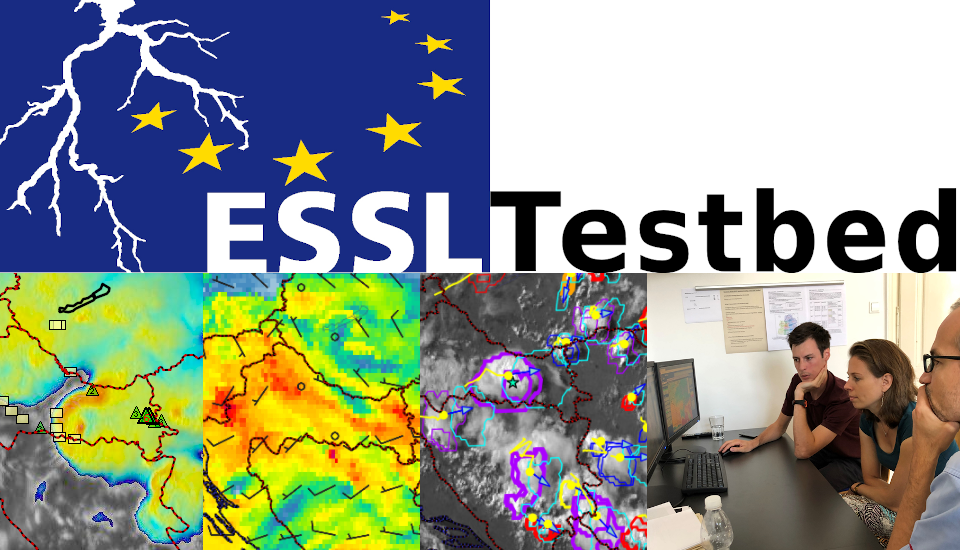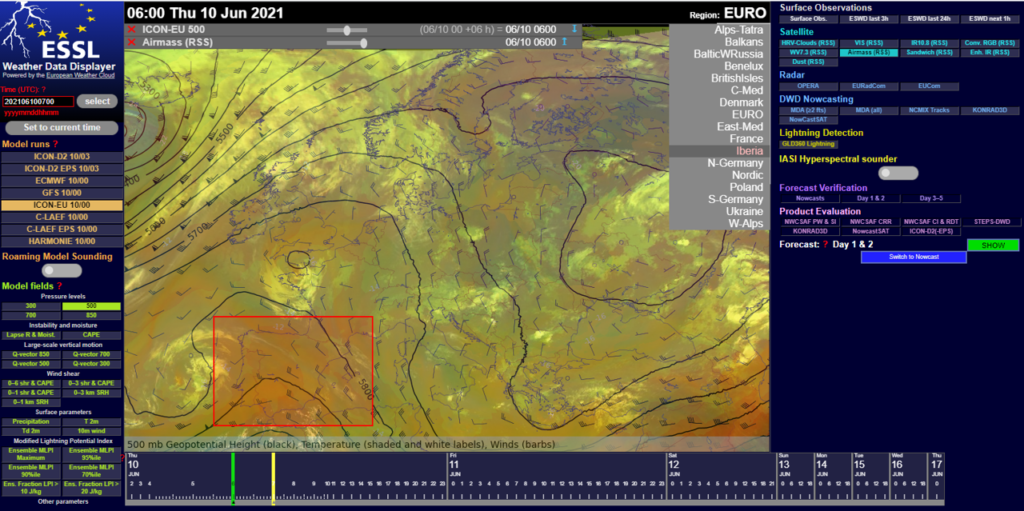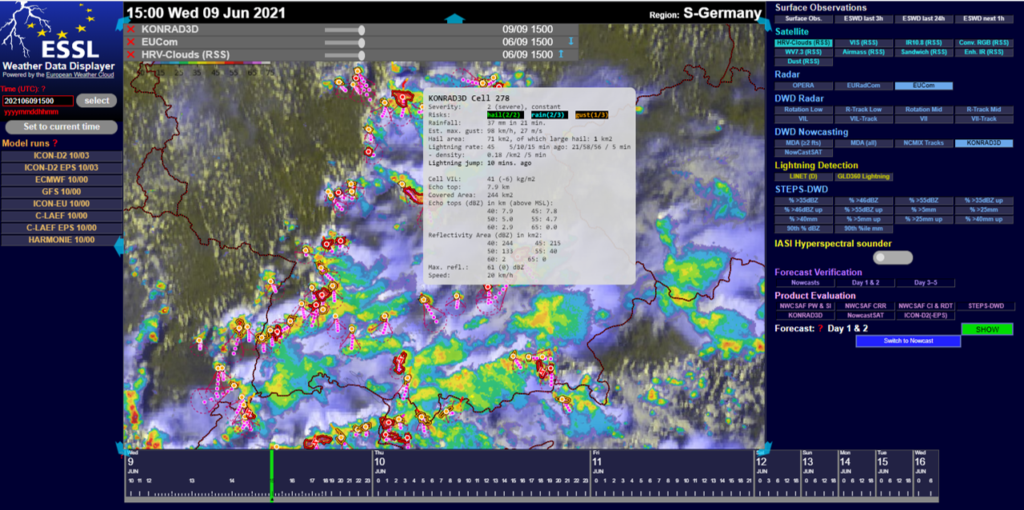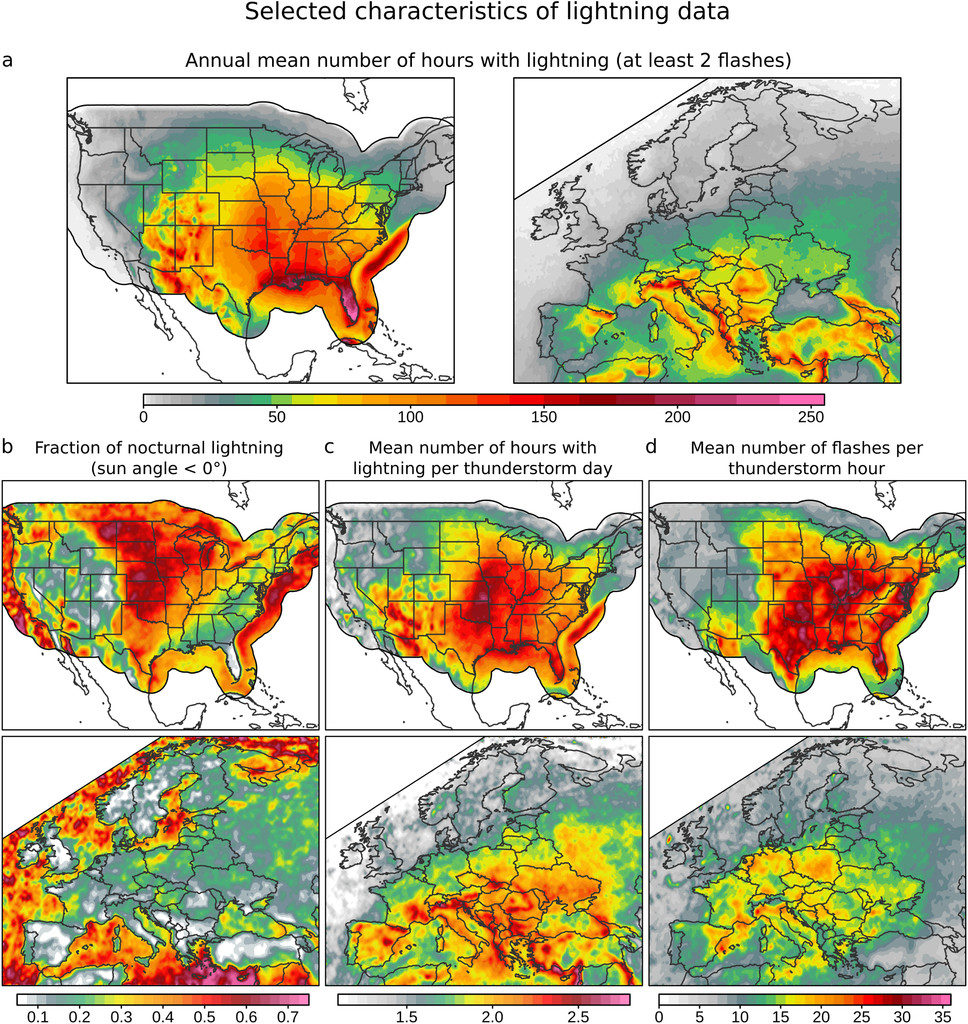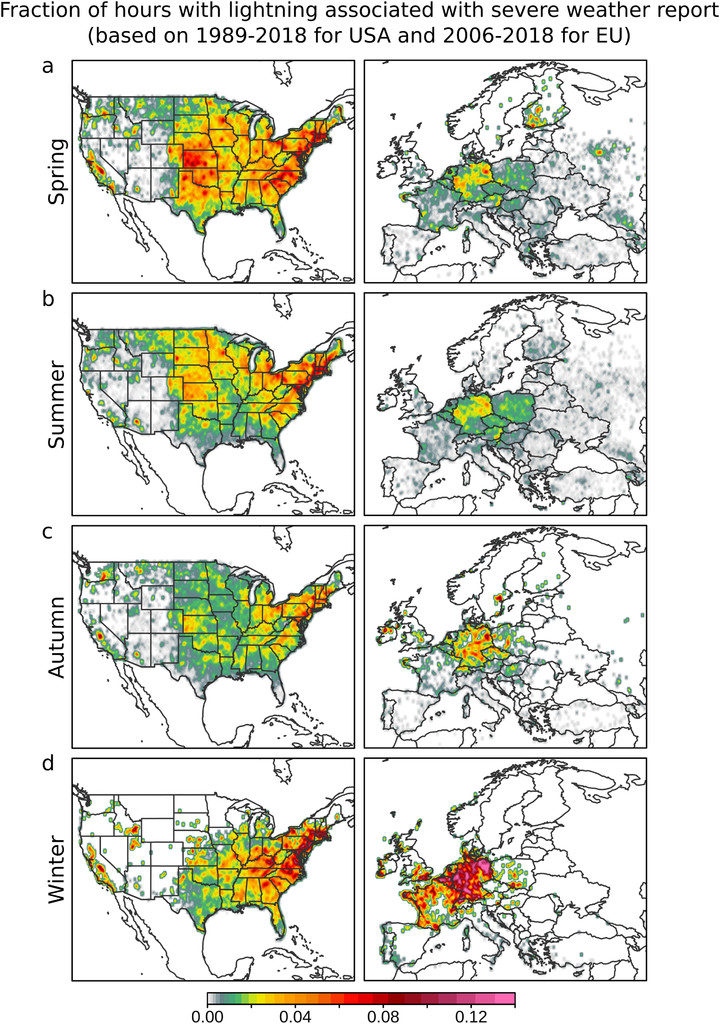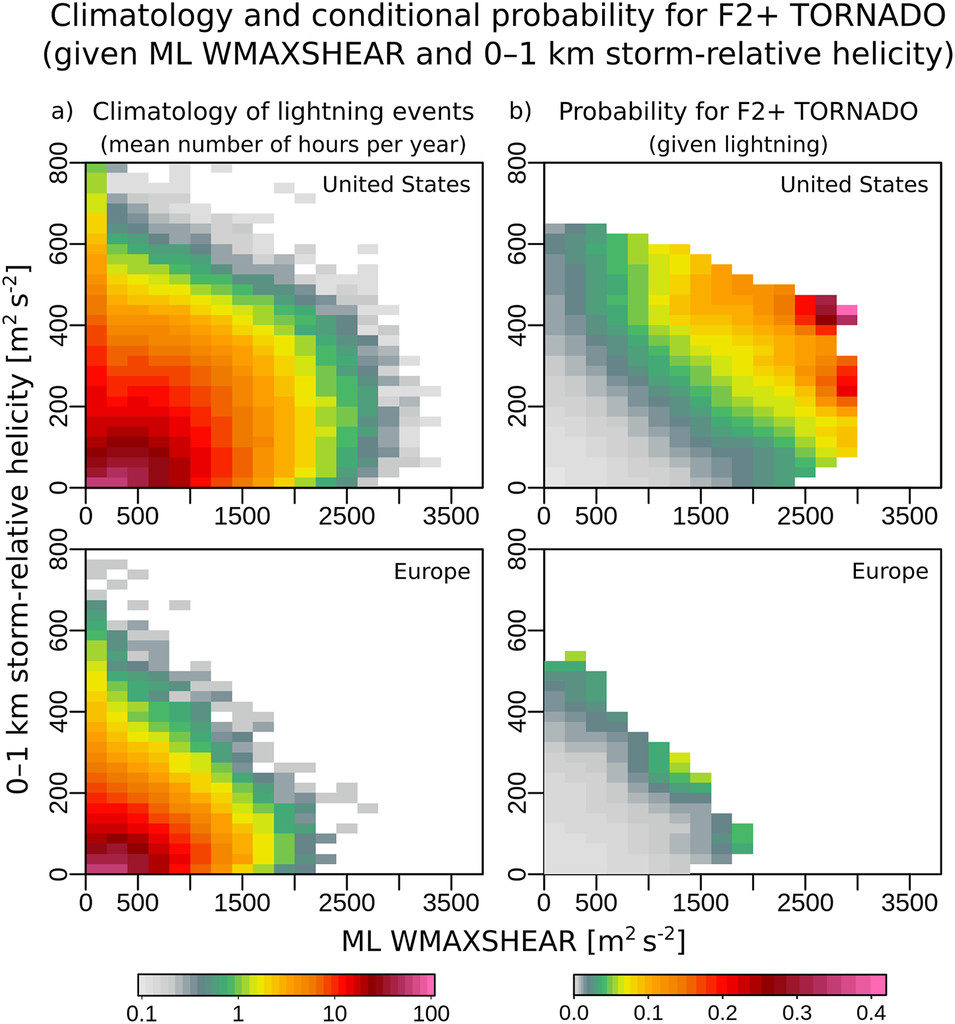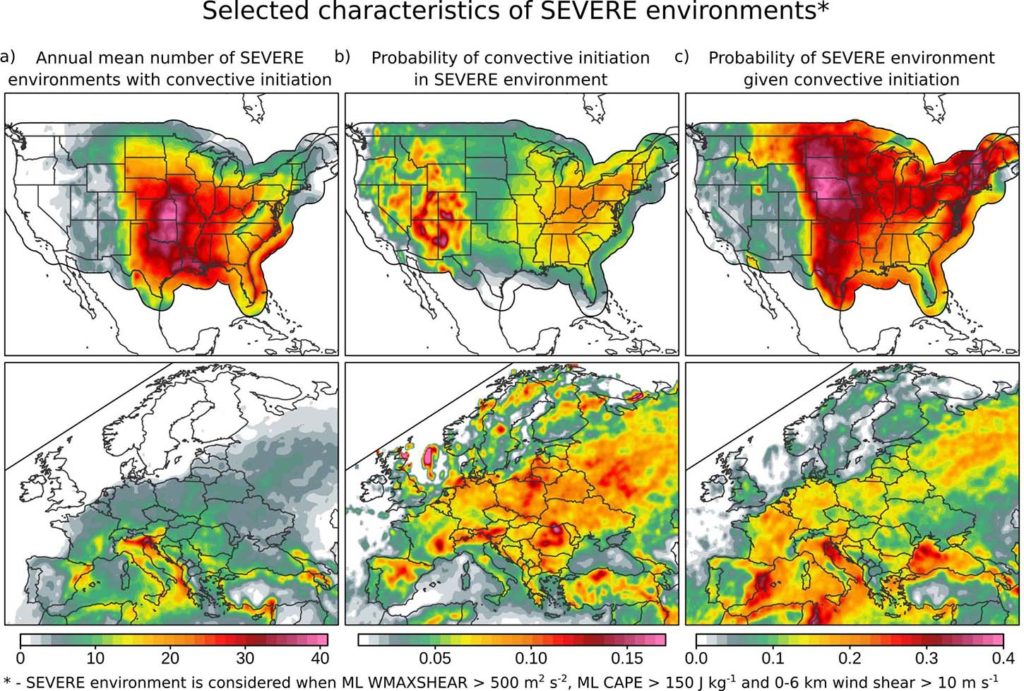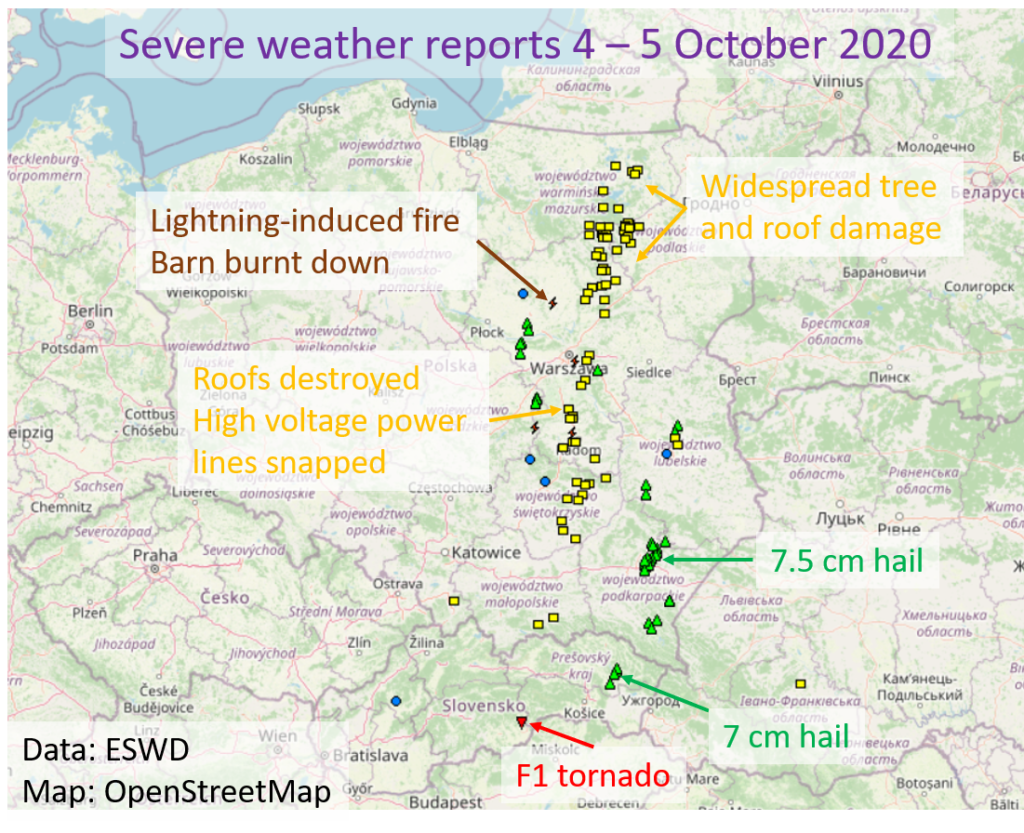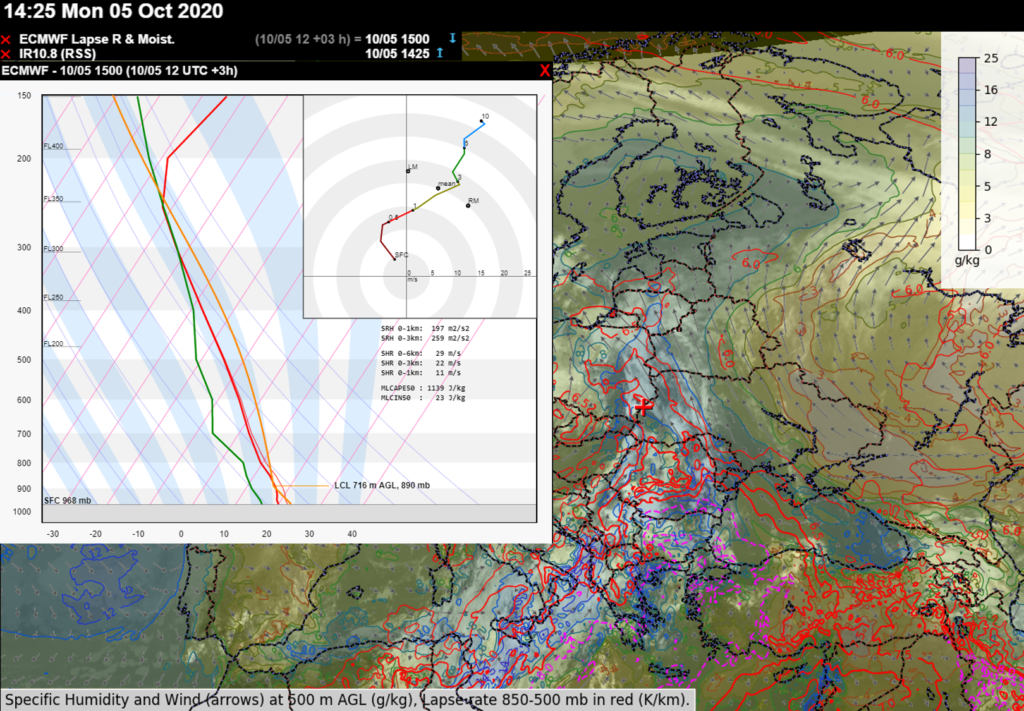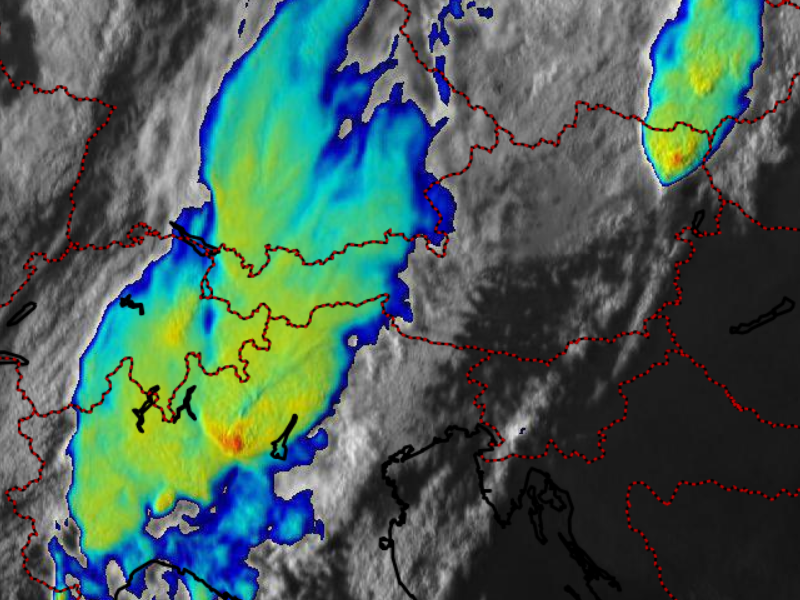2021 was a very big year for severe hailstorms across Europe. As of 31 October, we have received 5195 reports of large (≥ 2 cm) hail, 871 reports of very large hail (≥ 5 cm), and 29 reports of giant hail (≥ 10 cm) in the European Severe Weather Database. These numbers are far greater than in the previous years. The number of very large hail reports collected in 2021 is more than twice more than the second most active year, which was 2019. By 31 July, the sum of large hail reports exceeded the sum of reports in the past years collected over the whole 12 months.
2021 does not stand out as much when looking at the number of days with large and very large hail. The inflation in the number of hail reports was caused by very large amounts of reports submitted for some individual days, such as 24 June or 8 July. Any trends in hail reports can not be used to infer the trend in the frequency of severe hailstorms in Europe due to a large number of non-meteorological factors, such as the increases in reporting rates across different countries.
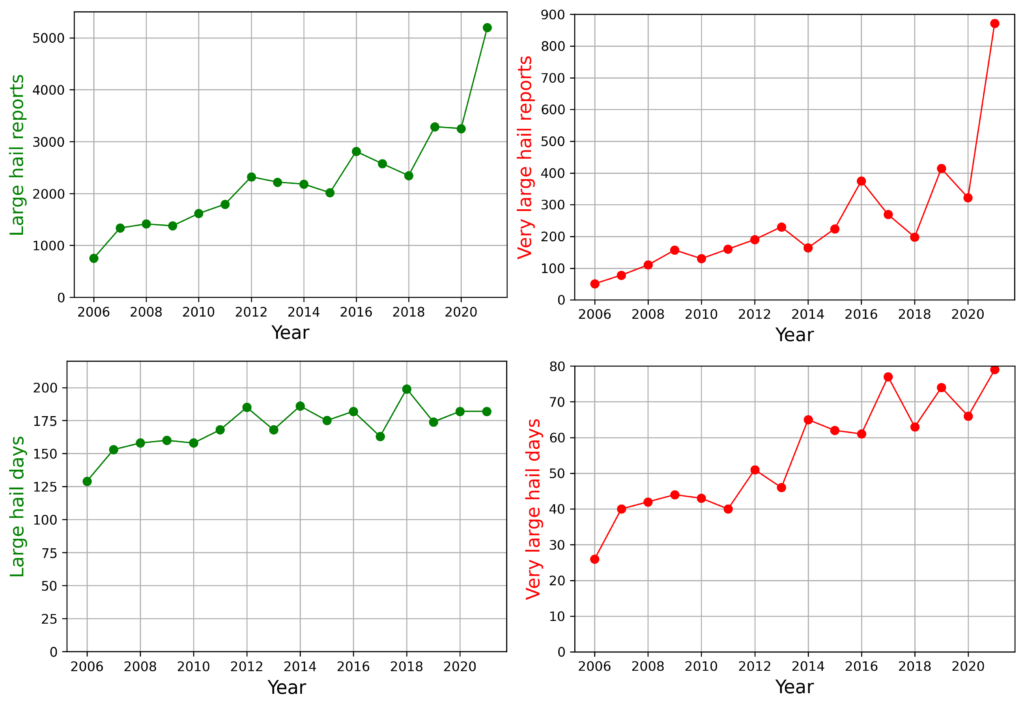
The 2021 severe hail season was particularly active in the pre-Alpine region, both on the northern (Switzerland, Austria, Germany) and southern flank (Italy), as well as across eastern Poland and southeastern Czechia. The largest hail was reported on 24 June in Poland with an estimated hail size of at least 13.5 cm. The largest number of injuries, 12, was reported from the 26 September hailstorm that hit Tuscany, Italy. 84.7% of the submitted hail reports included estimate or measurement of hail size.
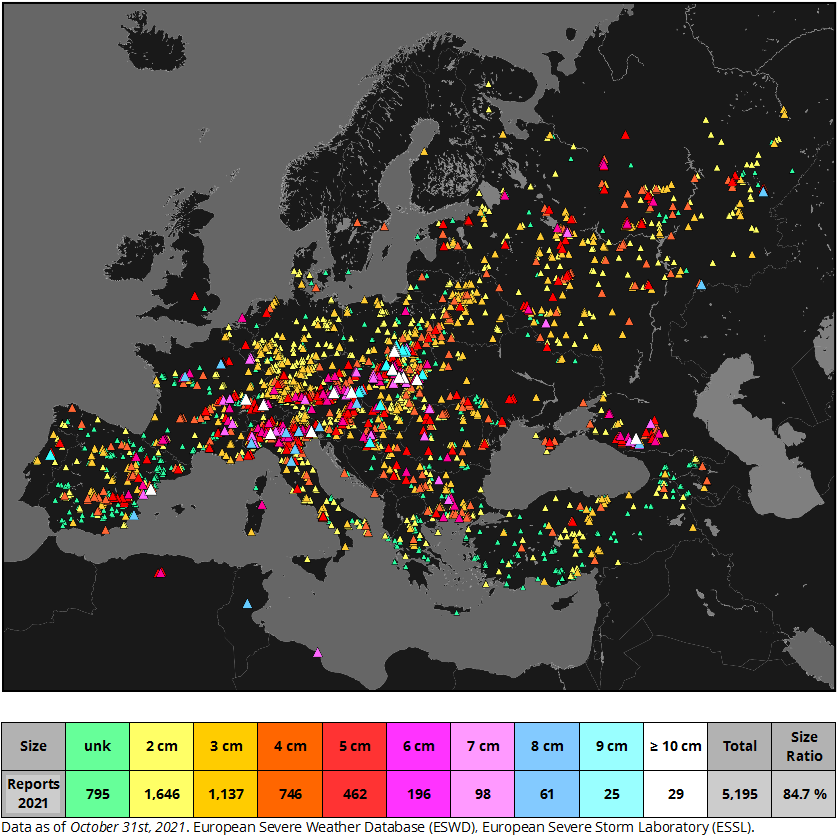
Below you can find a selection and description of some of the most severe hail days and hailstorms in 2021. This list is non-exhaustive, so a severe hailstorm that affected your region may not be included. Red font indicates a particularly severe event. In case you feel that we have missed a particularly severe event in this list or it is not included in the ESWD, please let us know and/or submit your reports at eswd.eu!
ESSL would like to express gratitude to all voluntary observers and networks for submitting severe weather reports for their respective countries.
22 May 2021: Numerous severe hailstorms produced very large hail up to 7 cm across in Stavropolskyi Kray in Russia.
12 June 2021: Very large hail up to 9 cm across fell in the town Tábua, Portugal.
14 June 2021: 40 sheep were killed by large hail near Ankara, Turkey.
16 June 2021: Very large hail up to 6 cm across damaged numerous roofs and cars in Krasnodarskyi kraj, Russia.
19 June 2021: Severe hailstorms affected the Central, Midi-Pyrénéés, Bourgogne, Picardie and Franche-Comtéregion regions in France. The largest hail fell in Vercel-Villedieu-le-Camp with a diameter up to 10 cm, causing significant damage to cars and roofs. This was the first giant hail report in Europe in 2021. Very large hail up to 7 cm also fell in Luxembourg
20 June 2021: Very large hail was reported in the Rhone-Alpes region, France, and Luzern canton in Switzerland.
21 June 2021: Widespread area spanning a belt from southern France through Switzerland into northwestern Austria was affected by severe hailstorms. Southern suburban areas of Munich experienced hail up to 5 cm across. Severe hail damage was reported from the border area of Austria and Bavaria with the largest hail size of 6.5 cm.
22 June 2021: 7 cm hail was reported in southern Russia. Two long-tracked hailstorms affected southern Germany and northwestern Austria. Severe damage to cars from 6 cm large hail was reported from the town of Gmunden, Austria.
23 June 2021: Severe hailstorm with hail up to 7 cm across caused damage on the border of Austria and Czechia.
24 June 2021: 809 severe hail reports were submitted to the ESWD for this day, 615 of them from Poland. This day has broken the record for the maximum daily number of hail reports submitted to the ESWD, as well as the maximum daily number of hail reports submitted for a single country. Several hail-related injuries were reported to the ESWD from this day along with widespread hail damage. In some villages and towns, most roofs were damaged or destroyed by hail.
Very large hail was reported from Austria, Czechia, Slovakia and Poland. Giant hail was reported from Poland and Austria. In Poland, giant hail was observed in multiple locations with the largest hailstone, measuring at least 13.5 cm across, reported from Tomaszów Mazowiecki, breaking the national record. The largest hail fell from a left-moving supercell. In Austria, giant hail was reported in two locations with the largest hailstone falling in Hollabrunn and an estimated diameter of 12 cm. Supercell that spawned the violent tornado between Breclav and Hodonin in Czechia also produced hail up to 9 cm on the border of Czechia and Austria.
25 June 2021: Severe hailstorms affected southeastern Austria, Croatia, Hungary, northern Slovakia and southern Poland. The largest 8.5 cm hailstone was reported from Czarny Potok in Poland.
28 June 2021: Very large hail was reported from Switzerland and southern Germany. 11 people were injured by hail in Switzerland and a giant, 10 cm, hail was observed in Wolhusen with significant damage to roofs, windows, and cars.
29 June 2021: Multiple severe hailstorms were reported in the Alpine area and parts of central Europe. A Hailstone of 8 cm in diameter was photographed in Tarcento, Italy.
30 June 2021:Very large hail up to 7 cm fell in northern Slovakia. A long track hailstorm across southern Poland produced giant hail up to 11.5 cm that weighed up to 200 g.
1 July 2021: Very large hail up to 7 cm across reported in Bulgaria.
8 July 2021: Very large hail was reported in Italy, Switzerland and Czechia. 169 large hail reports were submitted to the ESWD from Italy. The largest hail, 11 cm in diameter, fell in Rozanno, on the southwestern outskirts of Milan.
Image source: Tornado in Italia (author unknown)
9 July 2021: Very large to giant hail was reported from Croatia (up to 9 cm across), Hungary (up to 9 cm across) and Poland (up to 11 cm across). The largest hail across Poland was again produced by a left-moving supercell.
13 July 2021: Very large hail was reported from northern Italy (up to 7 cm in diameter) and southwestern Czechia (up to 6 cm in diameter).
14 July 2021: Very large hail up to 8 cm in diameter was reported from eastern Austria in the early morning hours.
15 July 2021: Very large hail was reported in Serbia and Romania (up to 7 cm in diameter).
25 July 2021: Very large hail, up to 8 cm in diameter, observed in Lombardia.
26 July 2021: Several long-tracked hailstorms formed over southern Germany and northern Italy. The largest hailstone reached 8 cm in diameter. One of the hailstorms crossed the highway near Parma, severely damaging hundreds of cars that were undrivable afterward. Minor injuries were also reported. Very large hail was also reported in Austria and Poland.
Examples of damage inflicted by wind-driven hail on 26 July 2021. Photos were taken by Rosella Rotelli and inmeteo.net.
30 July 2021: Very large hail up to 7 cm across damaged roofs in Rochefort-Samson, France.
31 July 2021: Numerous severe hailstorms occurred in eastern Spain and northern Italy. Giant hail up to 10 cm across fell in Peñíscola, the Valenciana region of Spain. In Italy, the largest hail fell in Piemonte with a diameter up to 8 cm across multiple locations.
1 August 2021: An early morning hailstorm produced giant hail up to 11 cm in diameter in Azzano Decino, Friuli-Venezia Guilia region of Italy. Serious damage to roofs and cars was reported. In the afternoon, very large hail was observed in Romania.
15 August 2021: Severe hailstorms formed over eastern France, southern Germany and eastern Slovakia. Maximum hail size reached 6 cm.
23 August 2021: Very large hail up to 8 cm in diameter was reported from southern Russia.
18 September 2021: Damaging hailstorm affected Tivat, Montenegro in the morning hours. Large hail caused significant damage to windows, cars, and crops
26 September 2021: 12 people were injured by very large hail in Vaglia, Tuscany. Significant damage was done to cars, roofs, windows, and crops.


